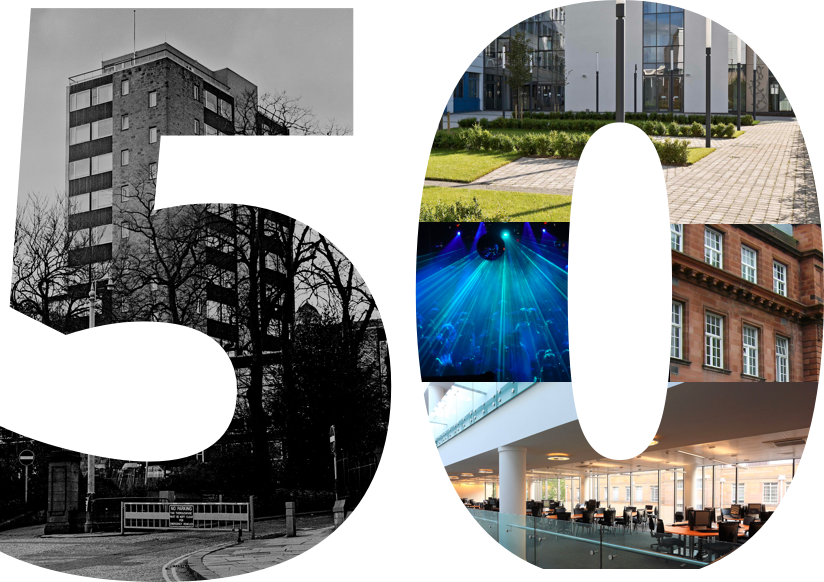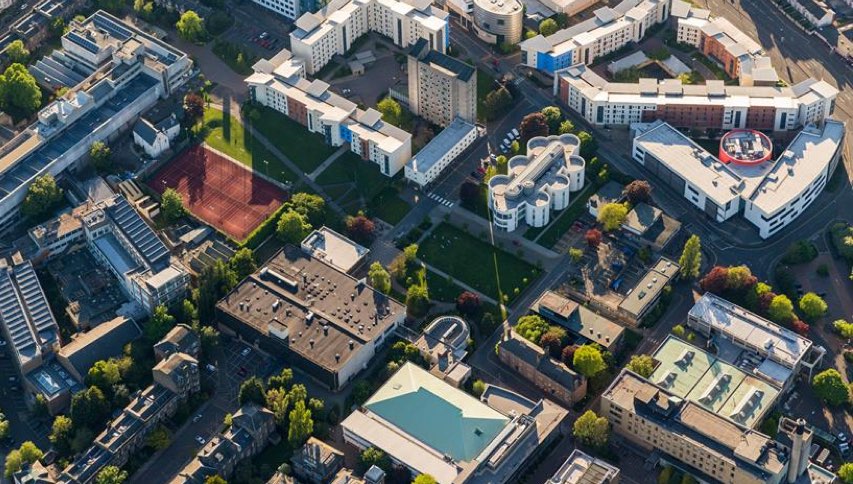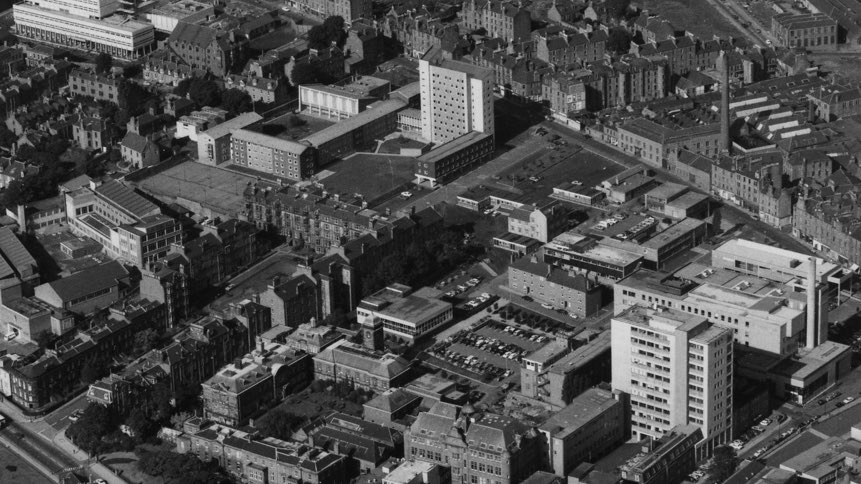
The road to independence 1881-1967
On 1 August 1967, the University of Dundee came into formal existence by virtue of a Royal Charter. A longstanding relationship with St Andrews had come to an end. Dundee was now free to develop in the ways it wanted to. Free, that is, subject to the same constraints of government policies, funding regimes and student choices which all universities in the UK faced then and still face now.
1881 – The beginning
In Dundee in 1881, Miss Mary Ann Baxter and her cousin, John Boyd Baxter - two of the famous Baxter family, who made their money from the Jute mills of the city - donated £140,000 to the creation of a college in Dundee. This was the beginning of the University of Dundee.
From the start it was an institution that stood out. Instead of professors with ivory tower backgrounds, it employed bright young people who realised that to compete in the modern world, Great Britain needed to improve its technological output. William Peterson, who was a Latinist and Scholar, became the inaugural Principal in 1882 at the tender age of 26. Patrick Geddes, who didn’t have a degree, was professor of botany and one of the foremost thinkers in the world.
Central to the institution's founding deed was that it should be used for "promoting the education of persons of both sexes, and the study of science, literature, and the fine arts”.
The Baxters' plans were for University College Dundee to offer a full range of subjects (other than Divinity – no-one was to be made to declare their religious convictions and no religious subject was to be taught).
The generous donations to the new University College saw the establishment of a Mechanics’ Institution, adjacent to the College, the construction of a Chemistry laboratory, and leading scholars appointed to the new Chairs. These included D’Arcy Thompson (Biology, later Natural History), James Alfred Ewing (Engineering), and Thomas Carnelley (Chemistry).
The new University was situated on the Nethergate, between Park Place and Small’s Wynd. To house the 373 students that signed up in the first year, four detached houses were bought by Mary Ann Baxter for £35,000 and a corridor was constructed at the rear to link the properties. Today those buildings house the Business School.
Initially, UCD and St Andrews worked alongside each other in relative harmony. Dundee students were able to graduate in Science from St Andrews, despite never having attended any classes in the smaller town.
Relations, however, soon became strained over the issue of the Medical School and whether chairs of Anatomy and Physiology should be established in Dundee, St Andrews or both, setting the stage for the tensions that would bedevil the relationship between the two institutions for the next few decades.

1897
An unsettled situation was shaken up still further by the Universities Scotland Act of 1889. This Act reorganised the legal position of university courts and senates, and under its provisions, commissioners were given the power to affiliate University College Dundee and make it part of St Andrews.
After some inevitably bitter arguments, an Agreement was drawn up by both parties. It resulted in St Andrews retaining Theology, Arts and Pure Science, and UCD taking on Applied Science and Medicine.
Medicine, however, had a confused position. In the Agreement it was described as ‘conjoint’ – a term that no-one actually bothered to define. In practice, students would spend their first summer session at St Andrews, and St Andrews would retain its Chairs of Natural History, Botany and Chemistry. Dundee Royal Infirmary was particularly keen to co-operate with clinical teaching.
However, both Dundee and St Andrews laid claim to teaching the pre-clinical subjects. Further acrimony ensued and disputes over finances arose. The Rector of St Andrews was particularly opposed to the Agreement, and wanted to disaffiliate. Regardless, Ordinances issued in 1897 ensured that UCD formed part of St Andrews and established a Faculty of Medicine.
By 1904, University College had a roll of 208, a figure that amounted to 40% of the combined University. By the mid 1900s, relations between the University of St Andrews and University College were becoming severely strained. A 1954 Royal Commission led to University College being given more independence, being renamed Queen's College, and taking over the Dundee School of Economics.

1967
Those invested in the future of both UCD and the University of St Andrews had divergent views as to the best way to proceed, ranging from full incorporation to complete separation.
The Royal Commission Report of 1952, chaired by Lord Tedder, aimed to resolve the differences. The commissioners believed there should be a single university with two colleges and that the Dundee college should incorporate the medical school.
The emphasis in Dundee would be on Social Sciences within the Faculty of Arts, and new chairs were to be created in Economics, Philosophy and History. It was proposed that a Faculty of Law be established, and that the teaching of education should take place in Dundee. Pre-clinical teaching in medicine and dentistry would be concentrated in Dundee.
In 1953, the University of St Andrews bill received royal assent. Queen’s College was born, and the Tedder plans put into action. The 1950s saw an expansion in terms of subjects, buildings, and student numbers. A new School of Social Studies, a new chair of Education, a part-time chair of Conveyancing to strengthen the Law Faculty, and a separate Faculty of Applied Science were all established at this time.
Progress was being made and Queen’s College was evolving, but not heading inexorably on the road to independence. What changed the situation was the Robbins Report of 1963, which concluded that ‘all who are qualified to pursue full time education should have the opportunity to do so’. The impact on Queen’s College was significant; demand for the social science courses increased and by 1966 student numbers were up to 2089.
The policy of non-duplication of courses with St Andrews was abandoned, with Principal Sir Malcolm Knox forecasting that this would increase numbers to a staggering 6,000. In 1964 he proposed that Queen’s College should become an independent university. On 1 August 1967, the royal charter was granted and the University of Dundee was formally established. The Queen Mother became the University’s first Chancellor, both raising its profile and acting as a vote of confidence in the fledgling institution.
It had been a long – and often bumpy – road to independence, but the University was now free to develop in its own way, and take steps towards becoming the outstanding institution it is today.

How has the campus changed?
The main campus at the university has undergone incredible change over the past 50 years. The 1960s alone saw the building of the Dentistry building, Bellmont Halls and, most notably, the Tower Building. Recent times have seen the rise of modern feats of architecture such as the Life Sciences building, the Dalhousie building and the award-winning School of Computing building.
Try our interactive ‘before and after’ tool:
 2017
2017
 1971
1971